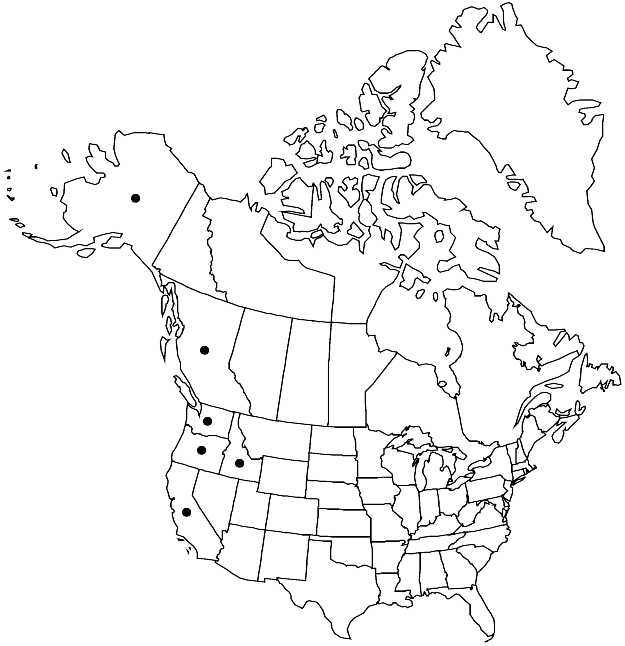Orthotrichum pulchellum
in J. E. Smith et al., Engl. Bot. 25: plate 1787. 1807.
Plants to 1.6 cm. Stem-leaves crisped-flexuose when dry, narrowly lanceolate to linear-lanceolate, 1.6–3.2 mm; margins recurved to near apex, entire; apex sharply acute; basal laminal cells rectangular, walls thick, not nodose; distal cells 8–14 µm, 1-stratose, papillae 1–2 per cell, conic, small. Specialized asexual reproduction absent. Sexual condition gonioautoicous. Seta (0.8–) 1–3 (–3.5) mm. Capsule exserted or sometimes 1/2 emergent, oblong-cylindric, 0.9–2.1 mm, strongly 8-ribbed entire length; stomata immersed, in mid and distal capsule; peristome double; prostome absent; exostome teeth 16, rarely connate in 8 pairs, erect when mature, reflexed when old, irregularly papillose-reticulate; endostome segments 16, well developed, of 1 row of cells, finely roughened. Calyptra oblong-conic to conic, smooth, naked. Spores 12–24 µm.
Habitat: Trunks, branches, twigs of deciduous and coniferous trees
Elevation: low to moderate elevations (0-1000 m)
Distribution

B.C., Alaska, Calif., Idaho, Oreg., Wash.
Discussion
Orthotrichum pulchellum is distinguished from all species of Ulota by its glabrous calyptrae and immersed stomata, and from O. consimile by the 16 reddish exostome teeth that are papillose-reticulate with slender, high papillae, and stomata always located at or beyond mid capsule. Also, plants of O. pulchellum are rarely longer than 1 cm, and capsules are usually barely exserted and oblong-cylindric.
Selected References
None.
Lower Taxa
"entire" is not a number.